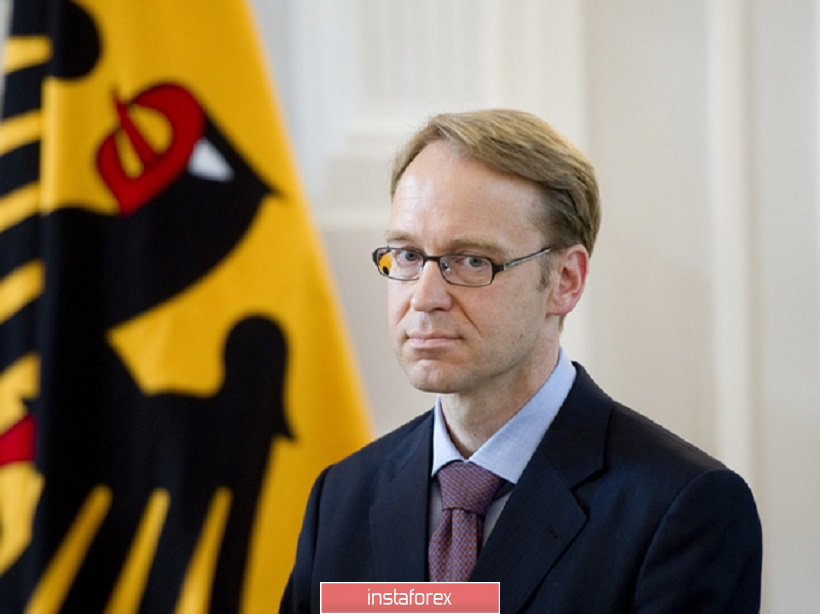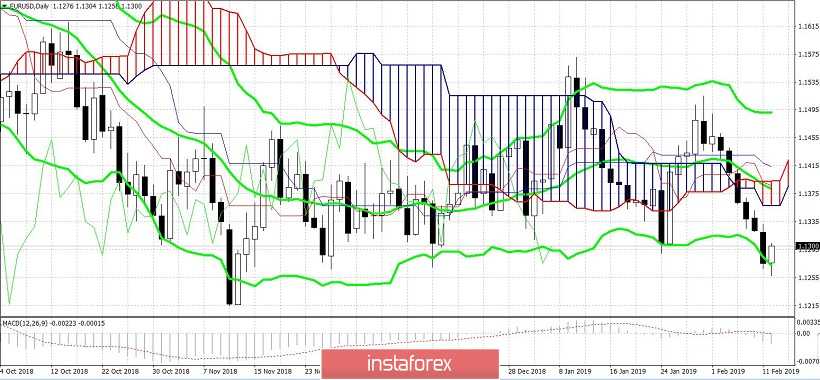The US dollar shows amazing resilience throughout the market. The dovish sentiment of the Federal Reserve has only temporarily weakened the position of the US currency: only two months after the pivotal meeting of the Fed, the greenback dominates in almost all pairs. Moreover, many experts predict a further rise in the dollar, at least during the first half of the year. Thus, a rather paradoxical situation develops in the market when the soft policy of the US central bank does not prevent the national currency from showing a revaluation. The euro-dollar pair in this context is no exception: after the January surge to the 15th figure, the price gradually approaches the main price stronghold - the mark of 1.10.
However, for the time being it is too early to talk about the 10th figure. Despite the bearish moods on the pair, the EUR/USD bulls have two trump cards in their reserves that can come into play in the very near future. First, we are talking about the US-China trade negotiations, and secondly, about the prospects of Brexit. If Beijing and Washington nevertheless conclude a truce, and London and Brussels find a compromise on the deal, then the euro will receive strong support, which will make it possible to test the 15th figure again. However, some analysts doubt that the upward impulse will grow into an upward trend. The main reasons for such doubts are connected, oddly enough, with the policy of the US central bank.
The fact is that the US Federal Reserve is, so to speak, in a kind of forefront of the latest trends in the financial world. It is a reference point for the central bank of the leading countries of the world (to some extent, naturally), therefore its decisions cannot be viewed in isolation, without taking into account its colossal influence. Announcing a slowdown in monetary tightening, the Fed has given a definite signal that can be compared to the "domino effect." Following the US regulator, the Reserve Bank of Australia and the Reserve Bank of New Zealand softened their rhetoric. The European Central Bank also changed the tone of its statements: in December and in January, representatives of the ECB were very careful about its prospects for the coming months.

Just today, the head of the Bundesbank, Jens Weidmann, once again disappointed supporters of tight monetary policy with his soft rhetoric. He said that the risk of a systemic crisis in the eurozone still exists, but the European regulator should refrain from taking political decisions "as a response mechanism to the crisis." And although here, Weidman hinted very transparently at the relationship between the Italian authorities and the ECB, the market took his words in a broader context. Almost all currency strategists of leading European banks do not expect any action from the European Central Bank regarding the interest rate this year. Weidman's rhetoric served as just another confirmation of this, as he had previously consistently advocated the expediency of tightening monetary policy. Therefore, after the most ardent representative of the hawkish wing, relatively speaking, "surrendered," there are no real chances for a rate hike this year.
This suggests that the single currency does not have its own forces for any large-scale recovery. Growth in GDP and inflation in the eurozone slowed down, and German data disappointed more than others, since in many positions (in particular, in terms of retail sales) they fell to multi-month lows. A similar situation exists in France and Italy (the Italian economy has entered a recession stage).
Against this background, the dollar began to be in demand again due to the growth of anti-risk sentiment. Bulls of the EUR/USD pair should not expect a change in the trend in the near future, even if tomorrow's release of data on the growth of US inflation will be worse than expected. Only the external fundamental background (China + Brexit) is able to drastically change the situation for the pair. Even the resolution of the issue of preventing a shutdown will not have a large-scale impact on the dynamics of the pair.

In other words, today's growth of the EUR/USD pair should be considered as a corrective recovery, but no more. The trend is still descending - this is indicated by signals on all the "higher" timeframes. On the daily, weekly and monthly charts, the Ichimoku Kinko Hyo indicator has formed a bearish Parade of Lines signal, and the price itself is between the middle and lower lines of the Bollinger Bands indicator. The likely "ceiling" of corrective growth is located in the area of 144.50 - this is the lower boundary of the Kumo cloud on the weekly chart. This level of resistance to bulls to break a pair will not be easy, given the overall negative fundamental background for the euro.








